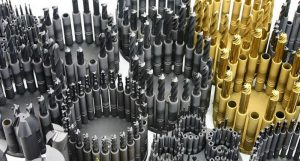PVD coating is a preferred deposition method that is continuously expanding.
 When it comes to vacuum deposition systems, PVD technology has been consistently paving the way forward with its stop-gap solution to coating discrepancies. Now, PVD coating, or physical vapor deposition coating, does its magic within a vacuum vessel. Below is a brief description of how the PVD coating process works.
When it comes to vacuum deposition systems, PVD technology has been consistently paving the way forward with its stop-gap solution to coating discrepancies. Now, PVD coating, or physical vapor deposition coating, does its magic within a vacuum vessel. Below is a brief description of how the PVD coating process works.
Breaking Down PVD Coating
The process of PVD coating starts with the product placement. The material that is about to be coated is placed on a fixture and then inserted into the vacuum chamber. Now, depending on the specific model of the PVD coating equipment being used, there are numerous ways where this can go, but the most common is as follows:
The unit is then set at a specific vacuum pressure that is desired by the user. Once it has been pumped down appropriately, the product will then be sputter cleaned and preheated. However, this does depend on the substrate and the type of process that the user is going with. Once the sputter cleaning has completed, there will be a negative charge applied to the cathode material.
The material that is being deposited will move to the substrate at an extremely high energy level and will then travel along the substrate’s surface until it reaches a specific placement site. Now, the bombarding of ions that occur amongst the substrate at the material will sputter the depositing material so there will be no build-ups that can often occur with electroplated coatings. This plays a large role in the quality of the finished result.
Denton Vacuum, LLC provides the highest quality vacuum evaporation system equipment on the market today. For users that are looking for premium products for their deposition applications, visit Denton Vacuum, LLC online today.